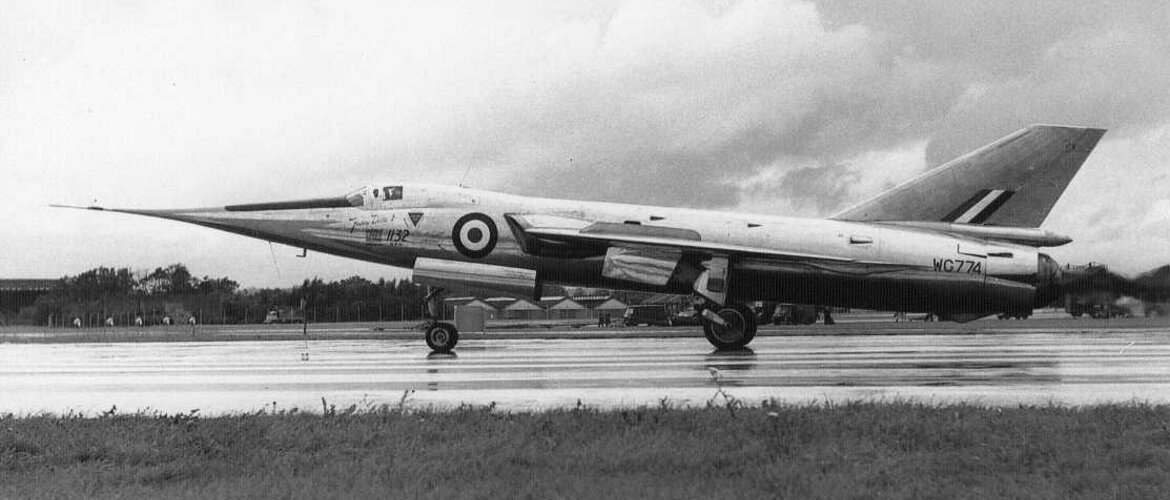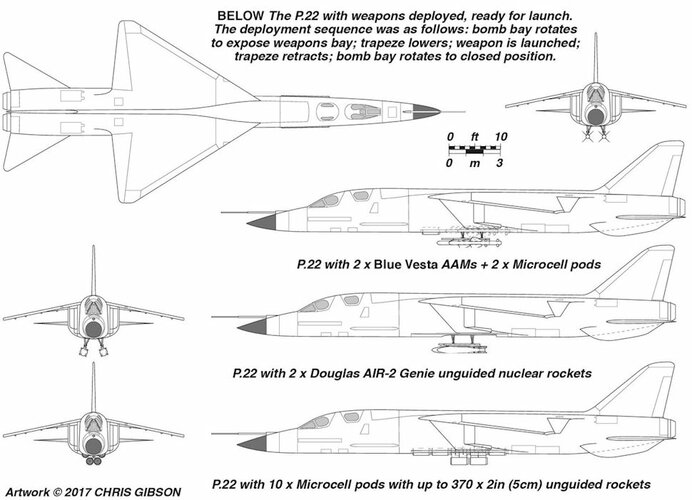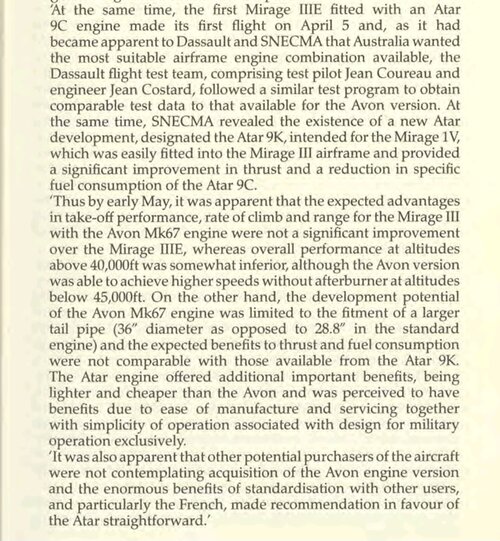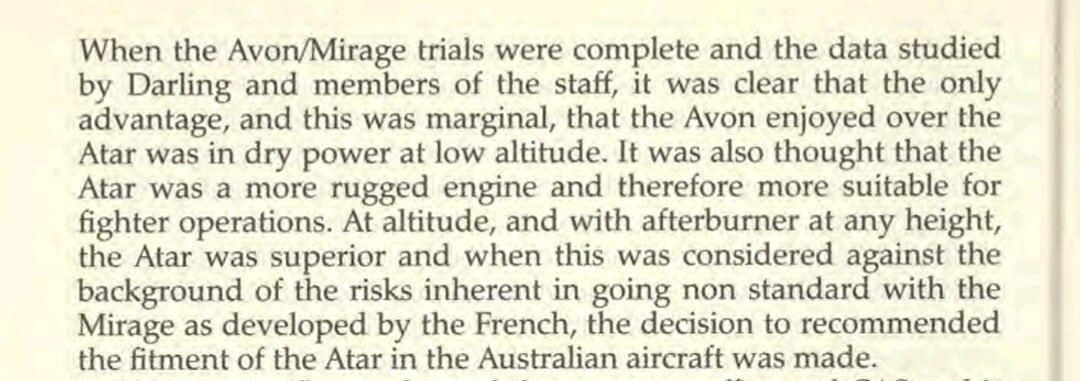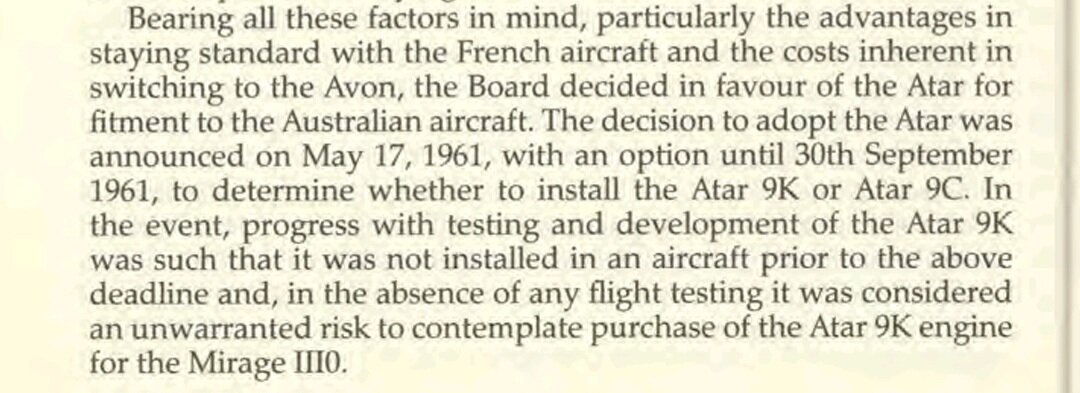I did a thread on this once.
You are using an out of date browser. It may not display this or other websites correctly.
You should upgrade or use an alternative browser.
You should upgrade or use an alternative browser.
Fairey Delta 2, not the English Electric Lightning
- Thread starter zen
- Start date
Rule of cool
ACCESS: Secret
- Joined
- 16 January 2024
- Messages
- 498
- Reaction score
- 640
Not in its original form, the first development was for a bigger fuselage with the same wings and the next development was the big fuselage with bigger wings. This would probably make a good combat aircraft, but its not really an FD2, more like an FD3.
I can see two different sizes and related engines.
-Mirage III -size with either Avon or Saphire
-F-106 -size with the whole enchilada of big, powerful turbojets: Medway / Conway / Gyron / Olympus - and Spey in the 1960's.
Both could be remarquable planes - if done right, of course !
-Mirage III -size with either Avon or Saphire
-F-106 -size with the whole enchilada of big, powerful turbojets: Medway / Conway / Gyron / Olympus - and Spey in the 1960's.
Both could be remarquable planes - if done right, of course !
Wasn't going to be too flexible with the built-in auxiliary rocket motors.
I never understood the fascination with rocket fighters. And with the fuselage design resembling a rocket, an emergency escape for the pilot seemed impossible.
I never understood the fascination with rocket fighters. And with the fuselage design resembling a rocket, an emergency escape for the pilot seemed impossible.
- Joined
- 6 November 2010
- Messages
- 4,228
- Reaction score
- 3,166
pathology_doc
ACCESS: Top Secret
- Joined
- 6 June 2008
- Messages
- 1,400
- Reaction score
- 1,112
Reaction time and climb/altitude performance. Most especially the latter, since rocket thrust doesn't fall off in rarefied air. The jet engines of the day simply weren't up to the job on their own for the height and speed profiles of the anticipated targets.I never understood the fascination with rocket fighters.
I'm reminded of a quote from Project Cancelled: "If not for the clumsy way in which you tackle things in Britain, you could have made the Mirage yourselves." Attributed to Marcel Dassault.
- Joined
- 27 September 2006
- Messages
- 5,744
- Reaction score
- 5,633
If we go down the paper aircraft route I would rather have this. Apologies to Chris for using his image pirated with lots of other stuff here
Attachments
- Joined
- 25 July 2007
- Messages
- 3,873
- Reaction score
- 3,179
... I always assumed the F.D.2 had an ejection seat.
It did - Martin-Baker Mk.3.
-- https://www.saam.org.au/history_group_docs/SAAM History - Martin Baker Ejection Seats.pdf
- Joined
- 20 January 2007
- Messages
- 896
- Reaction score
- 918
UK-Supersonics is as noisy a subject as TSR.2: snail trail, M.52, 9/43, to opnl Lightning 10/60. Q: Why so long?
Posts here display that a fighter could have emerged from FD.2: Fairey schemed some. More is at zen#4t thread and T.Buttler,BSP Jet Fighters, Chapter 6, Transonics. So, Q: why did we not?
Both Qs might have one A: need to get this right, as we would not be able to sustain a costly fly-off (no “Century Series” here)...but our insight into supersonic fighter procurement is opaque: Tony B found no Tender Evaluation after Research P.1A.
So, the dog that did not bark ; so, nothing will come of nothing, we may surmise (this is AH!).
Between Berlin Blockade 23/6/48 and PRC invasion of Korea 26/11/50 MoS funded supersonic fighter Study at many desks, but, initially, prototype only 4/49:2xAW.58 (60 sweep, M1.12); suspended 12/11/49; canx 16/5/50, for Fairey's 9th.Scheme, as 2xFD.2 (60 delta, M1.5). They funded 27/7/50 2xP.1 (60 sweep,>M1.2), schemed by EE Avn. Ch.Engineer WEW.Petter, who had resigned 2/50. None of this sits clearly to Operational Requirement, Experimental Reqt, MoS Spec, as there was no money in the Rearmament Prog for anything of vague, distant benison. FD.2 was contracted to ER.103, post-facto, and Spec F.23/49 evolved around, not before, P.1. It was, actually, courageous, Minister!, to put this work into EE and Fairey when UK, soon US, money, was to deploy Canberra and Gannet NOW! But that's what new Minister of Supply D.Sandys inherited, 31/10/51.
He spent UK+US money on Now types; he also funded 23/6/52 3 P.1B capable of some payload, then 20 DB, 25/2/54. After his time 50 materials sets were ordered late-'55, contract for the a/c 5/11/56: all “single-tender”, which means “no competition”. I know of no Bidding for $ for them, though he tried much, inc Medium Bombers; nor do I know of any UK Bid for Aid F-102A, in USAFE before RAF was opnl on Lightning F.1 (nor did we seem to try for multi-role F-100C/D offered to many).
It is a palaver to extract Treasury Authority to forego competition. Off-the-shelf, proprietary, is seldom real for military kit: P.1 derived from MoS-funded Study, from RAE and NASA work disseminated by MoS' Swept Wings Advisory Committee, and from German booty. MoS, 1953/54, eased Canberra's load on EE's Design Team by putting mod/role change work into BPA, Marshalls, (EE-owned) Napier, Shorts, so ensuring that EE designers were not conflicted with NOW-priority work, so deflecting any moan from HSAL/AWA, V-A, Fairey, who were.
The System - MoS/RAE, by 1954 depressed by everybody who was not F.Page and Co, knew who they wanted on this job.
Posts here display that a fighter could have emerged from FD.2: Fairey schemed some. More is at zen#4t thread and T.Buttler,BSP Jet Fighters, Chapter 6, Transonics. So, Q: why did we not?
Both Qs might have one A: need to get this right, as we would not be able to sustain a costly fly-off (no “Century Series” here)...but our insight into supersonic fighter procurement is opaque: Tony B found no Tender Evaluation after Research P.1A.
So, the dog that did not bark ; so, nothing will come of nothing, we may surmise (this is AH!).
Between Berlin Blockade 23/6/48 and PRC invasion of Korea 26/11/50 MoS funded supersonic fighter Study at many desks, but, initially, prototype only 4/49:2xAW.58 (60 sweep, M1.12); suspended 12/11/49; canx 16/5/50, for Fairey's 9th.Scheme, as 2xFD.2 (60 delta, M1.5). They funded 27/7/50 2xP.1 (60 sweep,>M1.2), schemed by EE Avn. Ch.Engineer WEW.Petter, who had resigned 2/50. None of this sits clearly to Operational Requirement, Experimental Reqt, MoS Spec, as there was no money in the Rearmament Prog for anything of vague, distant benison. FD.2 was contracted to ER.103, post-facto, and Spec F.23/49 evolved around, not before, P.1. It was, actually, courageous, Minister!, to put this work into EE and Fairey when UK, soon US, money, was to deploy Canberra and Gannet NOW! But that's what new Minister of Supply D.Sandys inherited, 31/10/51.
He spent UK+US money on Now types; he also funded 23/6/52 3 P.1B capable of some payload, then 20 DB, 25/2/54. After his time 50 materials sets were ordered late-'55, contract for the a/c 5/11/56: all “single-tender”, which means “no competition”. I know of no Bidding for $ for them, though he tried much, inc Medium Bombers; nor do I know of any UK Bid for Aid F-102A, in USAFE before RAF was opnl on Lightning F.1 (nor did we seem to try for multi-role F-100C/D offered to many).
It is a palaver to extract Treasury Authority to forego competition. Off-the-shelf, proprietary, is seldom real for military kit: P.1 derived from MoS-funded Study, from RAE and NASA work disseminated by MoS' Swept Wings Advisory Committee, and from German booty. MoS, 1953/54, eased Canberra's load on EE's Design Team by putting mod/role change work into BPA, Marshalls, (EE-owned) Napier, Shorts, so ensuring that EE designers were not conflicted with NOW-priority work, so deflecting any moan from HSAL/AWA, V-A, Fairey, who were.
The System - MoS/RAE, by 1954 depressed by everybody who was not F.Page and Co, knew who they wanted on this job.
Last edited:
southwestforests
ACCESS: Secret
- Joined
- 28 June 2012
- Messages
- 435
- Reaction score
- 561
Came here to see what was being said about airplanes and left with knowledge of a word I'd not previously encountered,It is a palaver to extract Treasury Authority to forego competition.
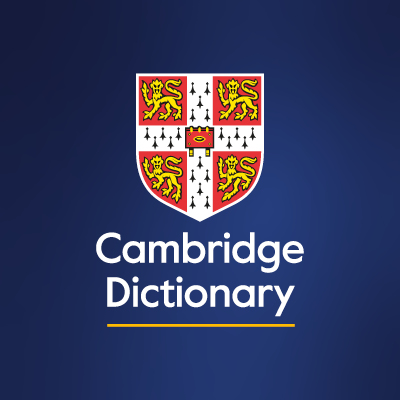
palaver
1. unnecessary work and trouble: 2. talking or discussion that goes on for too…
Rule of cool
ACCESS: Secret
- Joined
- 16 January 2024
- Messages
- 498
- Reaction score
- 640
I'd think one thing counts against the FD2 becoming a British Mirage III is that it presumably would use the radar and weapons of the Lightning.; An AI23 with a 21" dish as a opposed to the 15" dish Cyrano II of the Mirage III and a pair of ~300lb Firestreaks instead of a single ~420lb R530. These would need a bigger, more powerful aircraft than the FD2 and the similarly sized Mirage III, hence the proposals for a bigger fuselage and wings in the 2 step development process.
- Joined
- 3 January 2006
- Messages
- 967
- Reaction score
- 407
In all fairness, it’s hard to argue for the effectiveness of the early Cyrano/R530, as proven in 1967. The Mirage III wasn’t a success based on its avionics, or as a unified weapons system, but on French salesmanship and serviceability. Dassault could bring a product to market and sell it, an ability that was aided by French governmental willingness to sell to counties that the UK would have had under embargo.I'd think one thing counts against the FD2 becoming a British Mirage III is that it presumably would use the radar and weapons of the Lightning.; An AI23 with a 21" dish as a opposed to the 15" dish Cyrano II of the Mirage III and a pair of ~300lb Firestreaks instead of a single ~420lb R530. These would need a bigger, more powerful aircraft than the FD2 and the similarly sized Mirage III, hence the proposals for a bigger fuselage and wings in the 2 step development process.
In the same period, the UK could have produced a superior Mirage III analog with the Avon 200 series. As a direct supersonic Hunter replacement it made perfect sense. I’d argue that if Sir Sidney Camm had scaled the P.1121 around an Avon, with space reserved for a modest ranging radar, with the missile armament limited to the AIM-9B, the prototype could have been completed with company funds and it might very well have been picked up by the RAF, with development and production being funded by American dollars like the Buccaneer. (Most people forget that Blackburn Buccaneer was essentially overfunded with American taxpayer money, with an absurd number of prototype airframes to get it into service as quickly as possible.)
With the benefit of hindsight, British industry was blinkered by RAF intransigence and the governments of the era were clueless about, and totally unsupportive of, the export market. It didn’t help that there were too many engine programs and manufacturers. The French just had the ATAR. Not the best of its era, or any era, but far superior to failed British designs like the Gyron Junior and the Sapphire, which despite being better than initial Avon 100s, was total rubbish as the license produced J65. Meanwhile, the ATAR had an early start and matured over the years.
I’m sorry if I haven’t addressed the Fairey Delta II, but with its unnecessary drop nose, it was essentially a subscale demonstrator. It worked because of the well developed Avon but the rest of it wasn’t readily productionizable. The droop snoot did eventually come in handy in the big Concorde but it was a total distraction on the Delta II. It would have been hard for senior RAF staff to have envisioned the prototype as an operational fighter.
Last edited:
- Joined
- 27 September 2006
- Messages
- 5,744
- Reaction score
- 5,633
In defence of the RAF it focussed until 1962 on establishing the only other strategic bomber force in NATO than USAF SAC. Everything else was secondary to this, and wherever possible paid for by US largesse.
Contrary to public belief the Lightnings, Javelins and Bloodhounds of Fighter Command were not intended to defend London or other cities but solely to ensure protection of V bomber stations.
Tactical bombing and close air support were very secondary roles until NATO moved to flexible response in the 60s. Until then Canberras and Hunters were plentiful and already paid for.
In my ideal world (UK75) TSR2, P1154, and AW681 would have worked as promised and given us the most effective airforce in the world by 1970. Sadly like much in life stuff happened and we had to rely on Phantoms and Hercs.
Contrary to public belief the Lightnings, Javelins and Bloodhounds of Fighter Command were not intended to defend London or other cities but solely to ensure protection of V bomber stations.
Tactical bombing and close air support were very secondary roles until NATO moved to flexible response in the 60s. Until then Canberras and Hunters were plentiful and already paid for.
In my ideal world (UK75) TSR2, P1154, and AW681 would have worked as promised and given us the most effective airforce in the world by 1970. Sadly like much in life stuff happened and we had to rely on Phantoms and Hercs.
Rule of cool
ACCESS: Secret
- Joined
- 16 January 2024
- Messages
- 498
- Reaction score
- 640
In all fairness, it’s hard to argue for the effectiveness of the early Cyrano/R530, as proven in 1967. The Mirage III wasn’t a success based on its avionics, or as a unified weapons system, but on French salesmanship and serviceability. Dassault could bring a product to market and sell it, an ability that was aided by French governmental willingness to sell to counties that the UK would have had under embargo.
In the same period, the UK could have produced a superior Mirage III analog with the Avon 200 series. As a direct supersonic Hunter replacement it made perfect sense. I’d argue that if Sir Sidney Camm had scaled the P.1121 around an Avon, with space reserved for a modest ranging radar, with the missile armament limited to the AIM-9B, the prototype could have been completed with company funds and it might very well have been picked up by the RAF, with development and production being funded by American dollars like the Buccaneer. (Most people forget that Blackburn Buccaneer was essentially overfunded with American taxpayer money, with an absurd number of prototype airframes to get it into service as quickly as possible.)
With the benefit of hindsight, British industry was blinkered by RAF intransigence and the governments of the era were clueless about, and totally unsupportive of, the export market. It didn’t help that there were too many engine programs and manufacturers. The French just had the ATAR. Not the best of its era, or any era, but far superior to failed British designs like the Gyron Junior and the Sapphire, which despite being better than initial Avon 100s, was total rubbish as the license produced J65. Meanwhile, the ATAR had an early start and matured over the years.
I’m sorry if I haven’t addressed the Fairey Delta II, but with its unnecessary drop nose, it was essentially a subscale demonstrator. It worked because of the well developed Avon but the rest of it wasn’t readily productionizable. The droop snoot did eventually come in handy in the big Concorde but it was a total distraction on the Delta II. It would have been hard for senior RAF staff to have envisioned the prototype as an operational fighter.
Everyone was a bit disappointed with the results of how radars and 1st generation AAMs performed in combat by 1967, but a decade earlier everyone was sold on the future being mach 2, onboard radar for all weather capability and missile armament. Israel and Australia both bought the R530 with their Mirages and Australia also swapped the Sidewinders from their Sabres to the Mirages.
The AI23 and Firestreak was what Britain had in the late 50s, it will be fitted to whatever fighter Britain produces and this plane can't be a slug when loaded up with this stuff, which a Mirage III would be.
Last edited:
For all the flaws of the UK, it cannot escape it's geography and the limitations of radar.The AI23 and Firestreak was what Britain had in the late 50s, it will be fitted to whatever fighter Britain produces and this plane can't be a slug when loaded up with this stuff, which a Mirage III would be.
In the period where missiles were a developing technology, it wasn't rational to rely on them.
This reaches as far as DAW declaring missiles cannot replace aircraft in '56 even as Sandys schemes that very idea.
The reason OTL chooses Lightning is that EE had developed the P.1B out of the P.1, and this doesn't happen without some private sector effort.
Fairey had not and the FD.II was not as good a performance as the EE product.
Had Fairey gained HSA backingg, a development based on the FD.II might have swung things IF it promised P.1B performance or better.
Or had Fairey built a version wrapped around a Olympus.....
Rule of cool
ACCESS: Secret
- Joined
- 16 January 2024
- Messages
- 498
- Reaction score
- 640
For all the flaws of the UK, it cannot escape it's geography and the limitations of radar.
In the period where missiles were a developing technology, it wasn't rational to rely on them.
This reaches as far as DAW declaring missiles cannot replace aircraft in '56 even as Sandys schemes that very idea.
The reason OTL chooses Lightning is that EE had developed the P.1B out of the P.1, and this doesn't happen without some private sector effort.
Fairey had not and the FD.II was not as good a performance as the EE product.
Had Fairey gained HSA backingg, a development based on the FD.II might have swung things IF it promised P.1B performance or better.
Or had Fairey built a version wrapped around a Olympus.....
One issue missiles did address, or at least begin to attempt to, was the need for increased engagement range and weapon lethality. Even early AAMs got the fighters out of the engagement range of Soviet bombers defensive guns and packed more punch than a peppering of 30mm rounds on these big planes.
Rule of cool
ACCESS: Secret
- Joined
- 16 January 2024
- Messages
- 498
- Reaction score
- 640
Here is something I came accross that's relevant to the constant FD2 - Mirage III (and Lightning too I suppose) comparisons. Its from "The RAAF Mirage story' by WGCDR M.R. Susans.
"However, when configured with a pair of 'supersonic' (110 gallon) tanks and Sidewinder missiles in addition to the Matra*, the need for more power became apparent. In this configuration, speeds in excess of M1.2 and altitudes above 45,000 ft were difficult to achieve if intercept geometry required continual manoeuvering. This lack of power was also evident in the typical air combat configuration of supersonic tanks and Sidewinders only. The induced drag of the delta wing at high angles of attack would quickly cause a loss in aircraft performance if harsh combat manoeuvering was continuous."
*Matra R530K, the RAAF bought a batch when it bought the aircraft, kept them in service until 1985 but didn't do a follow-up buy.
"However, when configured with a pair of 'supersonic' (110 gallon) tanks and Sidewinder missiles in addition to the Matra*, the need for more power became apparent. In this configuration, speeds in excess of M1.2 and altitudes above 45,000 ft were difficult to achieve if intercept geometry required continual manoeuvering. This lack of power was also evident in the typical air combat configuration of supersonic tanks and Sidewinders only. The induced drag of the delta wing at high angles of attack would quickly cause a loss in aircraft performance if harsh combat manoeuvering was continuous."
*Matra R530K, the RAAF bought a batch when it bought the aircraft, kept them in service until 1985 but didn't do a follow-up buy.
The obvious development path Fairey was on would've seen a FDII development with large turbojet and cranked delta wings. Possibly with wingtip rails for Firestreak and Red Top.
Though Fairey's ideas on a SARH AAM be very Sparrow III like.
Depending on the engine, it would've been possible to develop RR's next generation engine for a MkII version.
Gyron Junior = RB.123
Avon = RB.106
Gyron = RB.122 or RB.128.
These would take the performance closer to F.155 without the need of rockets. Especially the largest of them.
Though Fairey's ideas on a SARH AAM be very Sparrow III like.
Depending on the engine, it would've been possible to develop RR's next generation engine for a MkII version.
Gyron Junior = RB.123
Avon = RB.106
Gyron = RB.122 or RB.128.
These would take the performance closer to F.155 without the need of rockets. Especially the largest of them.
Rule of cool
ACCESS: Secret
- Joined
- 16 January 2024
- Messages
- 498
- Reaction score
- 640
What were the big fuselage ER103/B and ER103/C supposed to weigh?
In my opinion, the defence of the UK during the Cold War needed a supersonic interceptor point defence with a large range of action, an impossible problem. They tried it with two types of twin-engine aircraft, the Lighting and the Saunders Roe with the intention that they could save fuel by using only one of them, but they were not good designs.
- Joined
- 27 September 2006
- Messages
- 5,744
- Reaction score
- 5,633
The US with much more space to defend produces the Voodoo and the F102. Either would.have been better than the Javelin.
Lightning is the easy option and the RAF made it work nearly till the end of the Cold War.
If the UK could have fitted the right radar and missiles the subsonic Buccaneer would have been similar to the Tornado ADV.
Lightning is the easy option and the RAF made it work nearly till the end of the Cold War.
If the UK could have fitted the right radar and missiles the subsonic Buccaneer would have been similar to the Tornado ADV.
ER103C quoted as weighing 27,300lb all-up.What were the big fuselage ER103/B and ER103/C supposed to weigh?
Time to 45,000ft 1.9 min
Top speed Mach 2.26 at 55,000ft
First flight projected to be 30 months from ITP.
Unclear if this is Gyron or RB.122.
Rule of cool
ACCESS: Secret
- Joined
- 16 January 2024
- Messages
- 498
- Reaction score
- 640
ER103C quoted as weighing 27,300lb all-up.
Time to 45,000ft 1.9 min
Top speed Mach 2.26 at 55,000ft
First flight projected to be 30 months from ITP.
Unclear if this is Gyron or RB.122.
A plane that big could more easily carry the burden of 2 or even 4 big AAMs than the little Mirage III could carry 2 small and 1 big AAM and slim tanks.
I'd think 2 1/2 years to develop a new fuselage and wings and bring this new plane into service is somewhat optimistic.
Agreed on the optimism. I'm not sure of the dates likely '55, which implies '58 to '59, but IOC in the early 60’s is more viable.
RB.128 being a further beefed up RB.122 (increased diameter RB.106), would solve the Thrust-to-weight ratio. Having over 23,000lb dry and 31,000lb reheated.
No need for rockets with that!
But early mk1 would be Gyron.
BS might bid Olympus Ol.21R alternative.
Last chance for AS to bid something. Salvaging supercruise engine effort after Avro recce bomber cancelled.
Good enough for Interceptor work, potential for tactical use at High and Medium altitudes. Recce and bombing. Terrible for low level flight.
RB.128 being a further beefed up RB.122 (increased diameter RB.106), would solve the Thrust-to-weight ratio. Having over 23,000lb dry and 31,000lb reheated.
No need for rockets with that!
But early mk1 would be Gyron.
BS might bid Olympus Ol.21R alternative.
Last chance for AS to bid something. Salvaging supercruise engine effort after Avro recce bomber cancelled.
Good enough for Interceptor work, potential for tactical use at High and Medium altitudes. Recce and bombing. Terrible for low level flight.
- Joined
- 29 September 2006
- Messages
- 1,628
- Reaction score
- 1,028
Wasn’t the Mirage III load 2 small OR 1 big AAM?A plane that big could more easily carry the burden of 2 or even 4 big AAMs than the little Mirage III could carry 2 small and 1 big AAM and slim tanks.
I'd think 2 1/2 years to develop a new fuselage and wings and bring this new plane into service is somewhat optimistic.
BLACK_MAMBA
ACCESS: Secret
- Joined
- 17 July 2019
- Messages
- 341
- Reaction score
- 757
In SAAF service Mirage IIICZs on alert carried 2 x Aim-9B and one Matra 530 on the belly. The Matra 530s did not last in service long though.Wasn’t the Mirage III load 2 small OR 1 big AAM?
Rule of cool
ACCESS: Secret
- Joined
- 16 January 2024
- Messages
- 498
- Reaction score
- 640
Wasn’t the Mirage III load 2 small OR 1 big AAM?
Air Forces weren't so rigid, they used what they had in the inventory in whatever combinations suited the circumstances. Israel didn't have Aim9s on their Mirages until about 1969, and only had 8 R530 launchers and 15 missiles, whereas Australia already had Aim9Bs so were able to load up 3 missiles if required.
BLACK_MAMBA
ACCESS: Secret
- Joined
- 17 July 2019
- Messages
- 341
- Reaction score
- 757
Israel had the Shafrir 1 from 1963 already although it wasn't very effective and was replaced by Shafrir 2 in 1971. Nobody had much success with R530 so I see it as no surprise it was quickly dropped from operational use even though it was still "in service".Air Forces weren't so rigid, they used what they had in the inventory in whatever combinations suited the circumstances. Israel didn't have Aim9s on their Mirages until about 1969, and only had 8 R530 launchers and 15 missiles, whereas Australia already had Aim9Bs so were able to load up 3 missiles if required.
BLACK_MAMBA
ACCESS: Secret
- Joined
- 17 July 2019
- Messages
- 341
- Reaction score
- 757
I'm surprised the orginial Mirage IIIO powered by the Avon 67 has not come up for discussion - the best possible analogy for what any potential Fairy Delta could have been had they not wanted to drastically upscale it. The Avon powered Mirage was better in some regards compared to the Atar 09C powered variant and offered engine performance similar to later Atar 09k50 powered Mirage 50s even though in flight testing is was very similar the standard Atar 09C powered Mirage IIIE. It was however a lot a more expensive proposition and tge Atarvwas though superior in other areas so Austraila went with the stock standard Mirage IIIE and its Atar 09C and also did not wait for the 09k50. I attach extracts from the RAAF Mirage book mentioned earlier.Here is something I came accross that's relevant to the constant FD2 - Mirage III (and Lightning too I suppose) comparisons. Its from "The RAAF Mirage story' by WGCDR M.R. Susans.
"However, when configured with a pair of 'supersonic' (110 gallon) tanks and Sidewinder missiles in addition to the Matra*, the need for more power became apparent. In this configuration, speeds in excess of M1.2 and altitudes above 45,000 ft were difficult to achieve if intercept geometry required continual manoeuvering. This lack of power was also evident in the typical air combat configuration of supersonic tanks and Sidewinders only. The induced drag of the delta wing at high angles of attack would quickly cause a loss in aircraft performance if harsh combat manoeuvering was continuous."
*Matra R530K, the RAAF bought a batch when it bought the aircraft, kept them in service until 1985 but didn't do a follow-up buy.
Attachments
Last edited:
Rule of cool
ACCESS: Secret
- Joined
- 16 January 2024
- Messages
- 498
- Reaction score
- 640
I'm surprised the orginial Mirage IIIO powered by the Avon 67 has not come up for discussion - the best possible analogy for what any potential Fairy Delta could have been had they not wanted to drastically upscale it. The Avon powered Mirage was better in some regards compared to the Atar 09C powered variant and offered engine performance similar to later Atar 09k50 powered Mirage 50s even though in flight testing is was very similar the standard Atar 09C powered Mirage IIIE. It was however a lot a more expensive proposition and tge Atarvwas though superior in other areas so Austraila went with the stock standard Mirage IIIE and its Atar 09C and also did not wait for the 09k50. I attach extracts from the RAAF Mirage book mentioned earlier.
I don't know if the Atar 9K the RAAF looked at is the famous 9K-50. Wiki has a reference to a 9K-10 but I can't find anything on it other than it was to be fitted to the Mirage IV, so it fits the RAAFs timeline for consideration. I believe the 9K-50 came along later and perhaps the earlier 9K-10s (if such a thing exists) were bought up to 50 standard in the Mirage IV fleet.
Israel had the Shafrir 1 from 1963 already although it wasn't very effective and was replaced by Shafrir 2 in 1971. Nobody had much success with R530 so I see it as no surprise it was quickly dropped from operational use even though it was still "in service".
I'd forgotten about the Shafrir 1, it must have been a real dud for Israel to not bother with it in wartime.
Also with the Avon being expensive, I recall a story the the French were costing the Avon in Australian pounds, which was pegged the the Sterling at 16 shillings. When the French found out their error and recalculated to Sterling the Avon became 20% dearer.
Last edited:
-Atar 9K-50 development started only in 1968: as the ultimate Atar for the Mirage F1.
-It derived from the Atar 9K, which was developped for the production Mirage IVAs, so post 1961.
-Mirage III developments in the 1960's (IIIE) stuck with the Atar 9C.
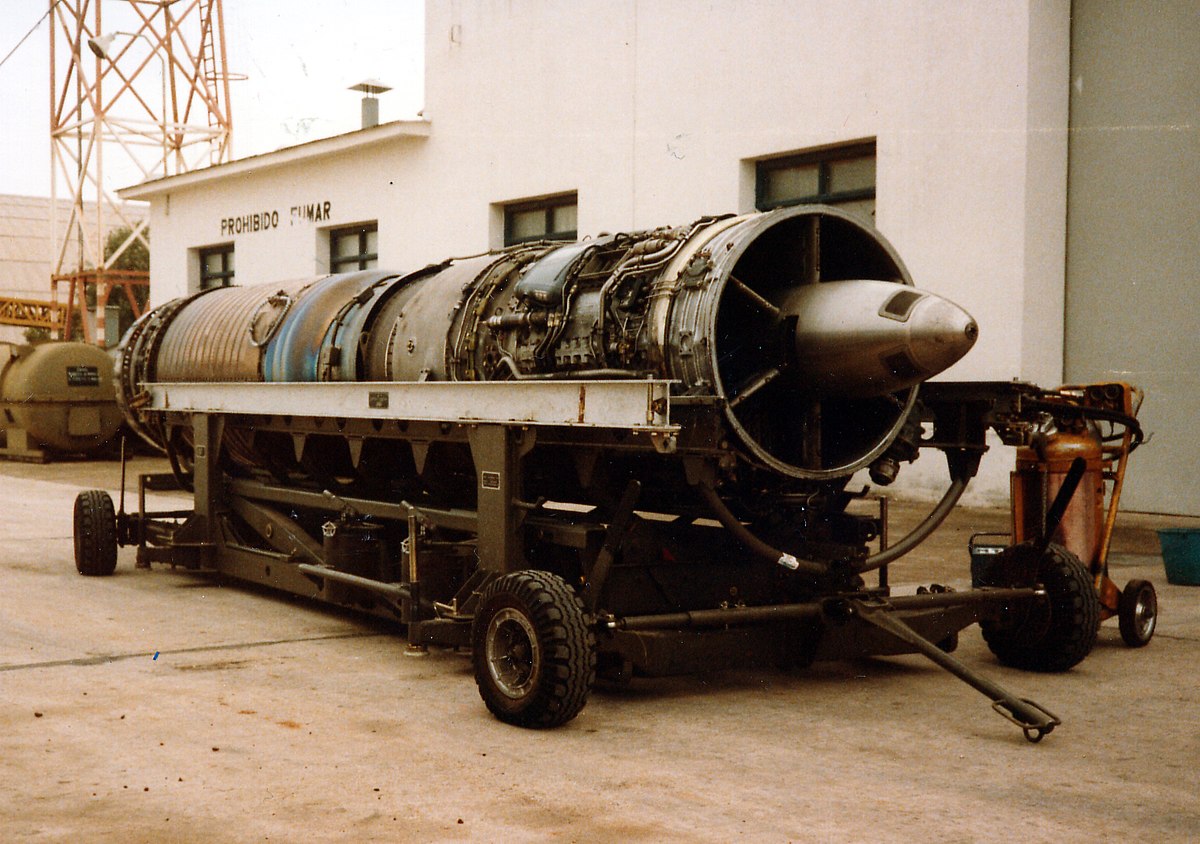
 fr.wikipedia.org
fr.wikipedia.org
-It derived from the Atar 9K, which was developped for the production Mirage IVAs, so post 1961.
-Mirage III developments in the 1960's (IIIE) stuck with the Atar 9C.

Snecma Atar — Wikipédia
Last edited:
Shafrir-1 was used in the April 1967 clashes (Mirage IIIJ first victories) and the Six days war. It did not worked well: at all.
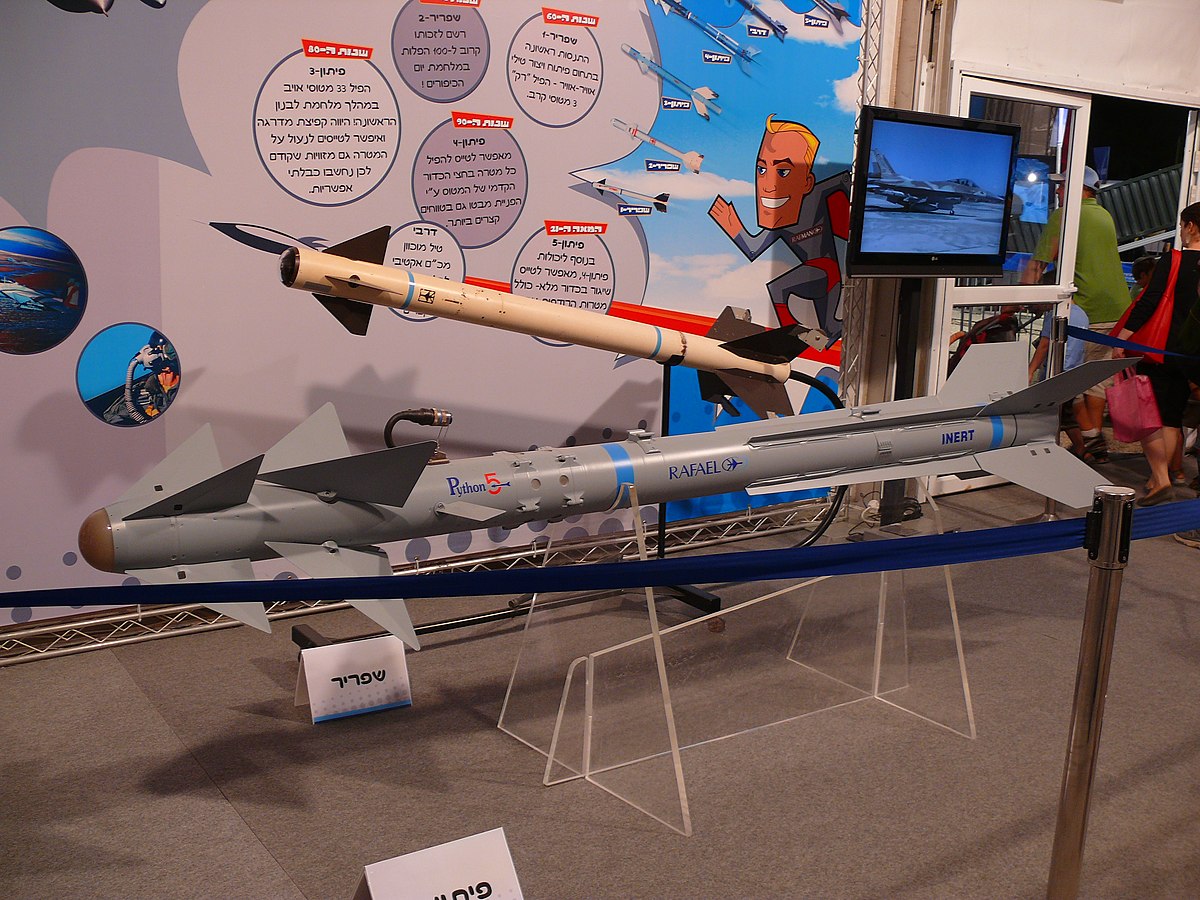
 en.wikipedia.org
en.wikipedia.org

Python (missile) - Wikipedia
Rule of cool
ACCESS: Secret
- Joined
- 16 January 2024
- Messages
- 498
- Reaction score
- 640
So the ER103 FD2 is unsuitable and the ER103/C will take years and a lot of money ro develop. Looks like the Lightning was the right choice in the circumstances.
On a semi related note I once read that the 'big belly' B52Ds out of Guam in the Vietnam era could only climb to 30,000' initially. They hit the tanker at about this altitude then as the fuel burnt off they gradually reached 39,000'. That means RAAF Mirages with 3 AAMs only had a 6000' altitude advantage over the B52. Similarly mach 1.2 vs the B53s mach 0.8 or so seems hefty, but the endurance of the Mirage at that speed would mean it doesn't have much time to use that speed to get into position.
On a semi related note I once read that the 'big belly' B52Ds out of Guam in the Vietnam era could only climb to 30,000' initially. They hit the tanker at about this altitude then as the fuel burnt off they gradually reached 39,000'. That means RAAF Mirages with 3 AAMs only had a 6000' altitude advantage over the B52. Similarly mach 1.2 vs the B53s mach 0.8 or so seems hefty, but the endurance of the Mirage at that speed would mean it doesn't have much time to use that speed to get into position.
NOMISYRRUC
ACCESS: Top Secret
- Joined
- 28 September 2008
- Messages
- 1,608
- Reaction score
- 2,377
May I cheat and suggest both? That is, develop the Lightning as the interceptor as IOTL and develop the FD.2 as a ground attack and recce aircraft (with a secondary fighter capability) instead of the Hunter FGA.9 & FR.10. A multirole version of the FD.2 can be developed for the export market.Can the fairy delta 2 became the mainstay of RAF fighter squadrons rather than the lightning?
Also what could be its export potential?
BLACK_MAMBA
ACCESS: Secret
- Joined
- 17 July 2019
- Messages
- 341
- Reaction score
- 757
Somehow I don't see there being enough cash/will to have two projects of such magnitude succesfully running. Why not somehow combine the radar equipped P.1109 Hunter and the supersonic P.1083 Hunter? A lot less ambitious by mostly building on existing hardware and knowledge. It could have been a potent opponent to the Mirage III I reckon! P.1083 also fell under the sword of constantly changing requirements while P.1109 at least made it to prototype form.May I cheat and suggest both? That is, develop the Lightning as the interceptor as IOTL and develop the FD.2 as a ground attack and recce aircraft (with a secondary fighter capability) instead of the Hunter FGA.9 & FR.10. A multirole version of the FD.2 can be developed for the export market.
Rule of cool
ACCESS: Secret
- Joined
- 16 January 2024
- Messages
- 498
- Reaction score
- 640
These things always come back to money and time.
Britain was already behind the curve on the deployment of modern aircraft as it took the gamble bypassing the transonic generation (F100, Super Mystere, Mig 19, F8) and went directly from subsonic Hunters and Javelins to the Mach 2 Lightning. This gamble paid off since the British got the mach 2 Lightning into sqn service in 1960, however they cannot wait any longer than that without a transonic combat fleet.
Then there's the money. The Lightning development was already paid for, 50 F1 and F1A lightnings were ordered in November 1956. The Hunter FGA9/FR10 were conversions of existing F6 day fighters so were very cheap, although the cost has to be measured against the short service life.
The ER103/C will be a similar size and complexity to the Lightning, vastly more complex than the Hunter conversions, delivered later than both and cost as much as the former to develop and buy, much more than the latter, be delivered too late and for all that offer marginal performance advantages over the Lightning.
Britain was already behind the curve on the deployment of modern aircraft as it took the gamble bypassing the transonic generation (F100, Super Mystere, Mig 19, F8) and went directly from subsonic Hunters and Javelins to the Mach 2 Lightning. This gamble paid off since the British got the mach 2 Lightning into sqn service in 1960, however they cannot wait any longer than that without a transonic combat fleet.
Then there's the money. The Lightning development was already paid for, 50 F1 and F1A lightnings were ordered in November 1956. The Hunter FGA9/FR10 were conversions of existing F6 day fighters so were very cheap, although the cost has to be measured against the short service life.
The ER103/C will be a similar size and complexity to the Lightning, vastly more complex than the Hunter conversions, delivered later than both and cost as much as the former to develop and buy, much more than the latter, be delivered too late and for all that offer marginal performance advantages over the Lightning.
- Joined
- 3 January 2006
- Messages
- 967
- Reaction score
- 407
The Hunters had already been paid for by the Americans and the conversions were relatively straightforward. There were even some decent exports. I’d guess the cost of the FGA.9 & FR.10 conversions was a tiny fraction of developing an all new supersonic, single Avon delta.May I cheat and suggest both? That is, develop the Lightning as the interceptor as IOTL and develop the FD.2 as a ground attack and recce aircraft (with a secondary fighter capability) instead of the Hunter FGA.9 & FR.10. A multirole version of the FD.2 can be developed for the export market.
Considering the era, a GCI of a Tu-16 Badger wouldn’t have required very much “continual maneuvering” and the Cyrano was most definitely not a look down/shoot down radar. I’d argue that the experience with the Avon Sabre was enough to dissuade them from re-engining the Mirage III with the Avon. All considered, the Canadians did far better with their Orenda powered Sabre. In the case of the Mirage IIIE, the ATAR was more than adequate and had enough production volume to be easily supported. With the Mirage buy, at least the Aussies kept it simple.Here is something I came accross that's relevant to the constant FD2 - Mirage III (and Lightning too I suppose) comparisons. It’s from "The RAAF Mirage story' by WGCDR M.R. Susans.
"However, when configured with a pair of 'supersonic' (110 gallon) tanks and Sidewinder missiles in addition to the Matra*, the need for more power became apparent. In this configuration, speeds in excess of M1.2 and altitudes above 45,000 ft were difficult to achieve if intercept geometry required continual manoeuvering. This lack of power was also evident in the typical air combat configuration of supersonic tanks and Sidewinders only. The induced drag of the delta wing at high angles of attack would quickly cause a loss in aircraft performance if harsh combat manoeuvering was continuous."
*Matra R530K, the RAAF bought a batch when it bought the aircraft, kept them in service until 1985 but didn't do a follow-up buy.
NOMISYRRUC
ACCESS: Top Secret
- Joined
- 28 September 2008
- Messages
- 1,608
- Reaction score
- 2,377
My figures are that 444 Hunters were rebuilt to FGA.9 & FR.10 standard of which 161 went to the RAF and 283 were exported. Furthermore, another 108 single-seat Hunters were converted to two-seat trainers of which 45 went to the RAF & RN and 63 were exported.There were even some decent exports.
Yellow Palace
ACCESS: Top Secret
- Joined
- 5 May 2007
- Messages
- 1,035
- Reaction score
- 1,694
That's a minor fantasy of mine for a follow-on to the P.1083.Why not somehow combine the radar equipped P.1109 Hunter and the supersonic P.1083 Hunter?
Given that the P.1083 would probably have taken the place of the OTL F.6, it's likely that the alt-FGA.9 and FR.10 would have been based on it as well, which gives you a bit more performance and longevity from that force.
The idea of a transonic trainer (equivalent to OTL's T.66) is quite appealing too, though of course the UK trainers were based on the F.4.
Quite possibly no performance advantage at all, unless it's redesigned as a much larger and more powerful aircraft. In which case, the cost and schedule completely wreck the prospects.The ER103/C will be a similar size and complexity to the Lightning, vastly more complex than the Hunter conversions, delivered later than both and cost as much as the former to develop and buy, much more than the latter, be delivered too late and for all that offer marginal performance advantages over the Lightning.
Similar threads
-
-
AWA Achilles the AW.58 scenario
- Started by zen
- Replies: 7
-
Ministry of Supply Industrial Analysis 1948 for Spec T.16/48
- Started by Hood
- Replies: 0
-
-

